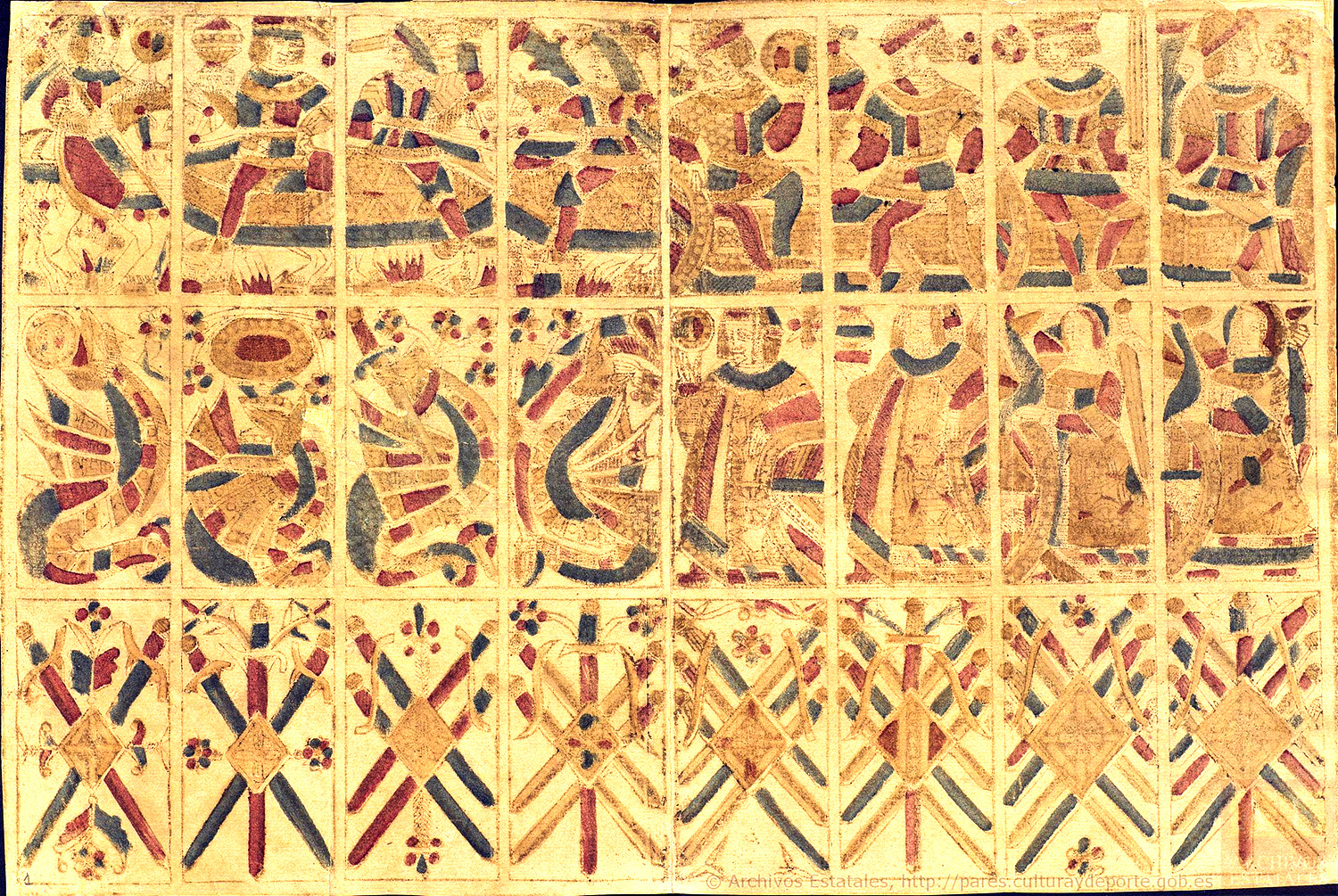Among the earliest copies of extant printed Hispanic American decks found in museums are those excavated in Lima. There is also a copy of a deck printed in Mexico, along with the 1583 asiento contract of the royal card monopolies. Both the Mexican and Peruvian decks are unusual in that they each have a fourth character, the dragon, along with the king, the knight and the squire, and therefore are decks of 52 cards. The Peruvian set featured two kings and two queens, which might suggest an audience of Inca lords and Creole elites accustomed to the iconography of gender complementarity and dual kingship.
Dragon card of Peruvian and Mexican Decks
Dragon card (detail). Printing tests of cards made in Mexico, corresponding to the contract of Alonso Martinez de Orteguilla (F. Flores, 1583). AGI-MP-MEXICO 73-1r (public domain).
Jorge Cañizares-Esguerra
Further reading
- Cashner, A.A. (2014) ‘Playing cards at the eucharistic table: Music, theology, and society in a Corpus Christi Villancico from colonial Mexico, 1628’, Journal of Early Modern History, 18: 383–419.
- de Covarrubias, P. (1543) Remedio de jugadores (Barcelona).
- Fajardo, F.L. (1603) Fiel Desengaño contra la ociosidad y los juegos: utilisisimo a los confesores, penitentes y justicias y demás a cuyo cargo está limpiar de vagabundos, tahúres y fulleros la Republica Cristiana (Madrid).





